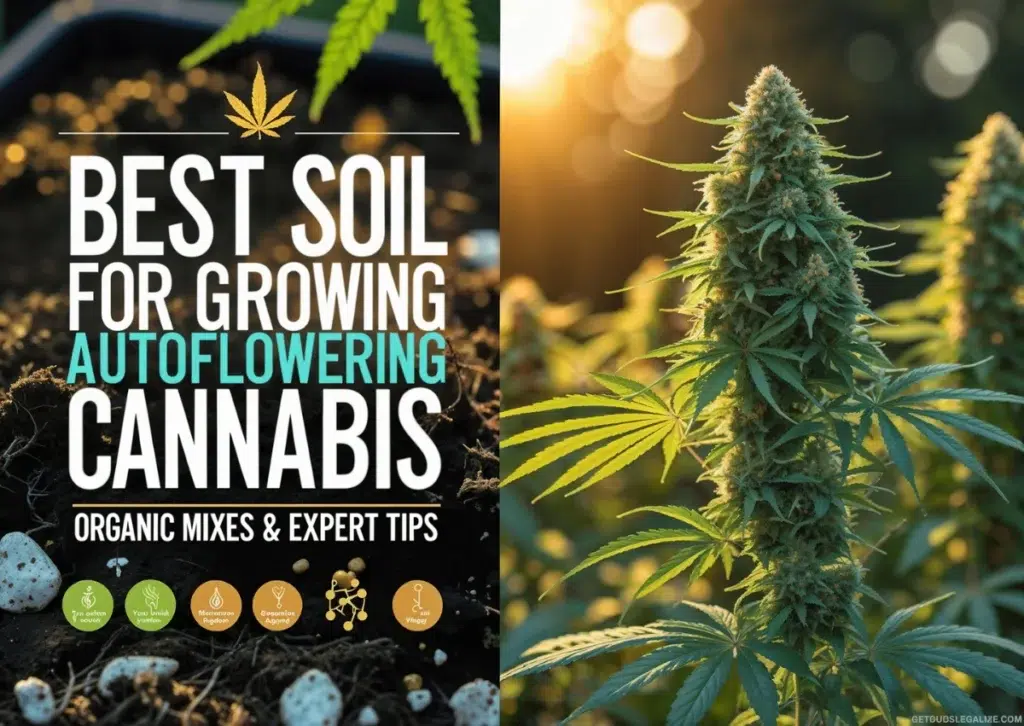How to Boost THC Levels in Cannabis Plants With These 7 Pro Tips
If you are a cannabis enthusiast, you might be wondering how to increase the THC level of your homegrown plants. THC, or tetrahydrocannabinol, is the main psychoactive compound in cannabis that gives you a high sensation.
But how can you boost the THC level of your cannabis plants? Is it possible to manipulate genetics, environment, or cultivation techniques to achieve higher potency?
In this blog post, we will share with you 7 tips that can help you increase the levels of THC in your cannabis plants, whether you grow them indoors, outdoors, or in a greenhouse.
1. Choose Marijuana Strains With The Highest THC Potential
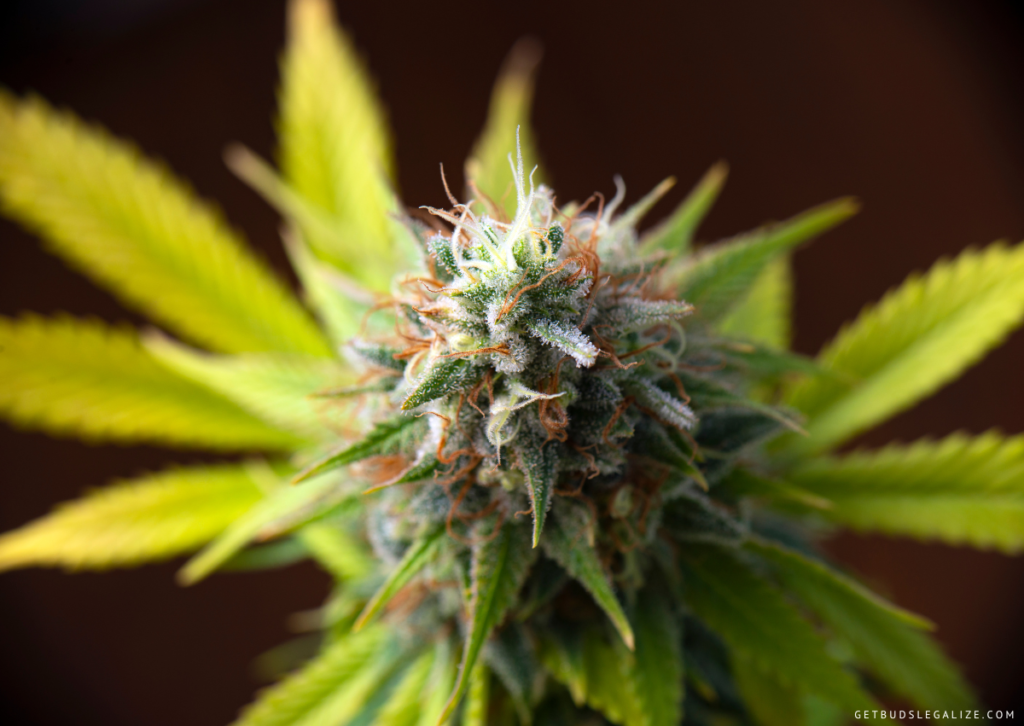
The first and most important factor that determines the THC level of your cannabis plants is their genetic potential. Different marijuana strains have different levels of THC, depending on their breeding history and plant genetics. Some cannabis strains are naturally low in THC, while others are bred to have extremely high levels of this cannabinoid.
Therefore, if you want to grow cannabis plants with high-THC, you need to choose seeds that have a high potential. You can find many reputable seed banks online that offer a wide range of high-THC marijuana strains, such as Blueberry Cupcake, Bruce Banner, or Godfather OG. These strains can reach up to 25% or even 30% THC when grown under optimal conditions.
However, keep in mind that genetic potential is not a guarantee of high-THC levels. You still need to provide your plants with the best care and environment possible to maximize their potency.
2. Maintain Your Plant's Health From Seed to Harvest

Another crucial factor that affects the THC level of your cannabis plants is their overall health and well-being. Healthy plants are more likely to produce more resin and trichomes, which are tiny glands that contain THC and other cannabinoids. On the other hand, stressed or diseased plants are more likely to produce less resin and lower-quality buds.
Therefore, you need to maintain your plants health from seed to harvest by providing them with adequate water, nutrients, airflow, pest control, and disease prevention. You also need to avoid overwatering, overfeeding, over-pruning, or exposing your plants to extreme temperatures or humidity levels. By keeping your plants happy and healthy, you will ensure that they produce the highest amount of THC possible.
3. Ensure Optimal Lighting Levels and Exposure

Lighting is another key factor that influences the THC level of your cannabis plants. Light is essential for photosynthesis, which is the process by which plants convert light into energy. The more light they receive, the more Buds and resin they produce.
However, not all lights are created equal. Different types of grow lights have different wavelengths and intensities that affect the growth and development of your plants. For example, blue light stimulates vegetative growth, while red light stimulates flowering and resin production.
One of the best types of lights for growing high-THC cannabis plants is LED (light-emitting diode) lights. LED lights are energy-efficient, durable, and versatile. They can emit a full spectrum of light that mimics the natural sunlight and can be adjusted according to the different stages of growth. LED lights also produce less heat than other types of lights, which reduces the risk of heat stress and damage to your plants.
To ensure optimal LED lighting levels and exposure for your cannabis plants indoors, you need to consider several factors:
- The wattage and coverage area of your LED lights.
- The distance between your lights and your plants.
- The light cycle and duration for each stage of growth.
- The light intensity and spectrum for each stage of growth.
Here are some general guidelines for using LED lights indoors:
- Choose LED lights that have a wattage of at least 50 watts per square foot of growing space.
- Hang your LED lights at a distance of 12 to 18 inches from your plant canopy during the vegetative stage and 6 to 12 inches during flowering.
- Use a light cycle of 18/6 (18 hours on and 6 hours off) during vegetative growth and 12/12 (12 hours on and 12 hours off) during flowering.
- Use a light spectrum that has more blue light during vegetative growth and more red light during flowering.
• Outdoor Homegrown Cannabis:
If you grow your cannabis plants outdoors, you will rely on natural sunlight as your main source of light. Sunlight is free, abundant, and powerful. It can provide your plants with a full spectrum of light that can enhance their growth and potency.
However, sunlight also has some drawbacks. It is unpredictable, variable, and seasonal. It can change depending on the weather, the time of day, and the location. It can also expose your plants to environmental stressors, such as wind, rain, hail, frost, pests, and diseases.
Therefore, if you want to grow outdoors, you need to consider several factors:
- The best time to plant and harvest your cannabis plants.
- The best strain to choose for your outdoor growing conditions.
- The best location to place your cannabis plants.
- The best way to protect your cannabis plants from environmental stressors.
Here are some general guidelines for growing high-THC cannabis:
- Plant your cannabis seeds or clones in late spring or early summer, when the risk of frost is minimal and the days are getting longer.
- Harvest your cannabis buds in late summer or early fall, when the days are getting shorter and the trichomes are fully mature.
- Choose a strain that is suitable for your outdoor growing conditions, such as a Sativa-dominant or autoflowering strain that can handle heat, humidity, and pests.
- Place your cannabis plants in a location that has good soil quality, drainage, and access to water.
- Protect your cannabis plants from environmental stressors by using mulch, stakes, nets, fences, greenhouses, or other methods.
• Greenhouse Homegrown Cannabis:
If you grow your cannabis plants in a greenhouse, you will have the best of both worlds. You will benefit from the natural sunlight as well as the controlled environment of an indoor growing space. You will also save on electricity costs and reduce your environmental impact.
However, cannabis cultivation in a greenhouse also has some disadvantages. It can be expensive to maintain and configure, and can also expose plants to temperature fluctuations, parasites, diseases, and possible theft.
Therefore, if you want to grow in a greenhouse, you need to consider several factors:
- The supplemental lighting system you need.
- The heating and cooling system you need.
- The ventilation and air filtration system you need.
- The best strain to choose for your greenhouse growing conditions.
Here are some general guidelines for growing high-THC cannabis:
- Use supplemental LED lights that have a wattage of at least 50 watts per square foot of growing space during cloudy days or dark periods.
- Use a heating and cooling system that maintains a temperature of 68 to 77°F (20 to 25°C) during vegetative growth and 65 to 75°F (18 to 24°C) during flowering.
- Use a ventilation and air filtration system that removes excess heat and moisture and brings fresh air into your greenhouse.
- Choose a strain that is suitable for your greenhouse growing conditions, such as a hybrid or autoflowering strain.
4. Harvest Your Buds at The Right Time
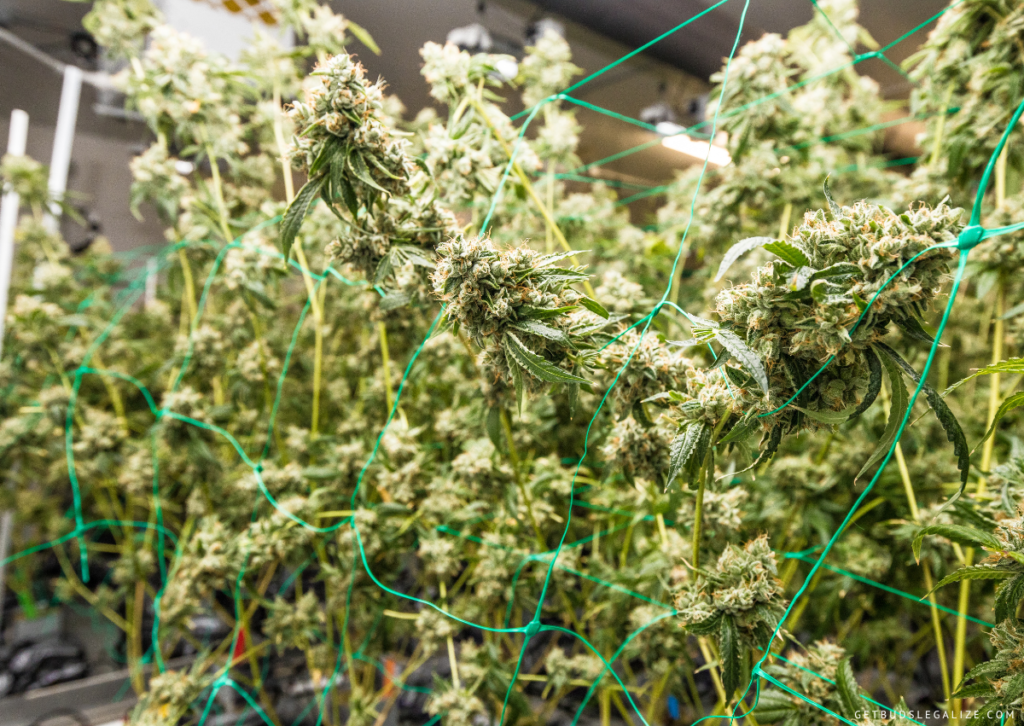
One of the most common mistakes that cannabis growers make is harvesting their buds too early or too late. Harvesting too early can result in underdeveloped buds that have low THC levels and weak effects. Harvesting too late can result in overripe buds that have degraded THC levels and unpleasant effects.
To harvest your cannabis buds at the right time, you need to pay attention to two indicators: the pistils (the hair-like structures that emerge from the buds) and the trichomes (the resin glands that cover the buds).
The pistils change color from white to orange, red, or brown as the buds mature. When about 50% to 70% of the pistils have changed color, it means that your buds are ready for harvest.
The trichomes change color from clear to cloudy to amber as the buds mature. When about 70% to 90% of the trichomes are cloudy, it means that your buds have reached their peak THC level and are ready for harvest.
You can use a magnifying glass or a microscope to observe the trichomes more closely.
5. Use a Supplemental UVA/UVB Light

UVA and UVB are two types of ultraviolet (UV) rays that are present in natural sunlight but not in most artificial lights. UV rays can stimulate the stress response of cannabis plants and make them produce more resin glands as a form of protection. This can boost THC levels and other cannabinoids in your buds.
To use a supplemental UVA/UVB light, you need to add a special bulb or lamp to your existing lighting system and expose your plants to it for about 2 to 3 hours per day during their flowering. You can also use a full-spectrum LED light that includes UVA/UVB wavelengths.
However, you need to be careful not to overexpose your plants to UV rays, as they can also damage their cells and reduce their growth and yield. You also need to protect yourself from UV rays, as they can harm your skin and eyes.
6. Do Not Rush or Neglect The Bud-Curing Process
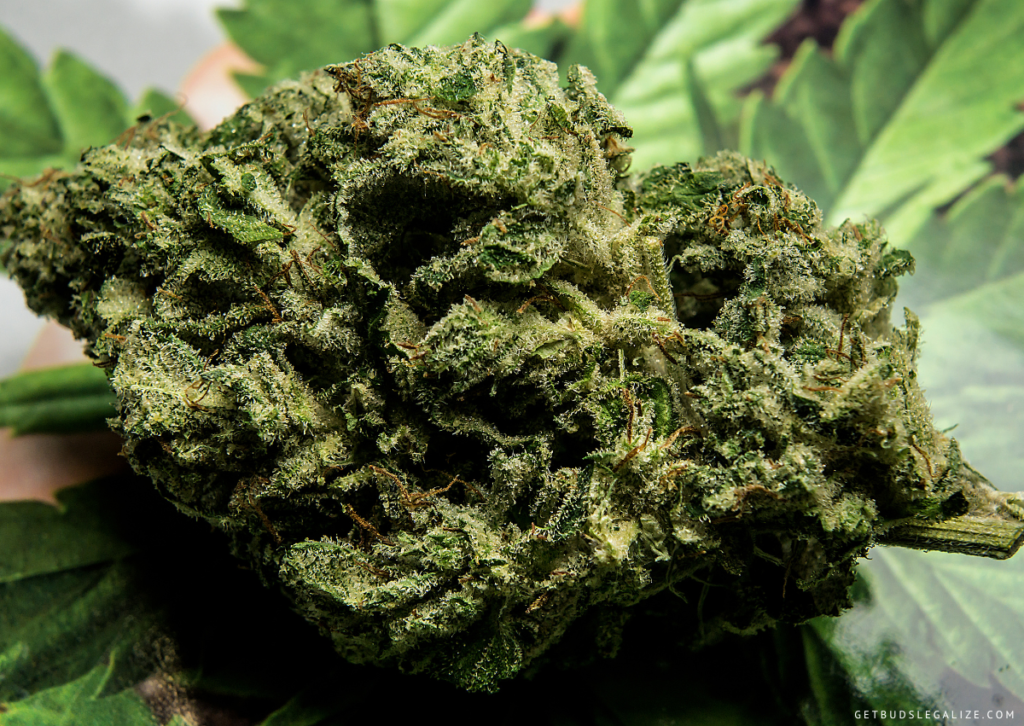
Curing is a process that involves storing your harvested buds in airtight containers for several weeks or months to improve their flavor, aroma, potency, and shelf life. Curing can also increase the THC level of your buds by converting some of the non-psychoactive THCA (tetrahydrocannabinolic acid) into psychoactive THC through a chemical reaction called decarboxylation.
To cure your cannabis buds properly, you need to follow these steps:
- Trim off any excess leaves and stems from your buds.
- Dry your buds slowly in a dark, cool, and well-ventilated area until they feel dry on the outside but still slightly moist on the inside. This can take anywhere from 5 to 15 days, depending on the humidity and temperature.
- Place your buds in glass jars with airtight lids and fill them up to ¾ full. Leave some space for air circulation.
- Store your jars in a dark, cool, and dry place away from direct sunlight and heat sources.
- Open your jars once or twice a day for 15 minutes to let some fresh air in and release any moisture or gases. This is called burping.
- Repeat this process for at least 2 weeks or up to several months until your buds reach their optimal flavor, aroma, and potency.
7. Try to Adopt Low Temperatures During Late Flowering
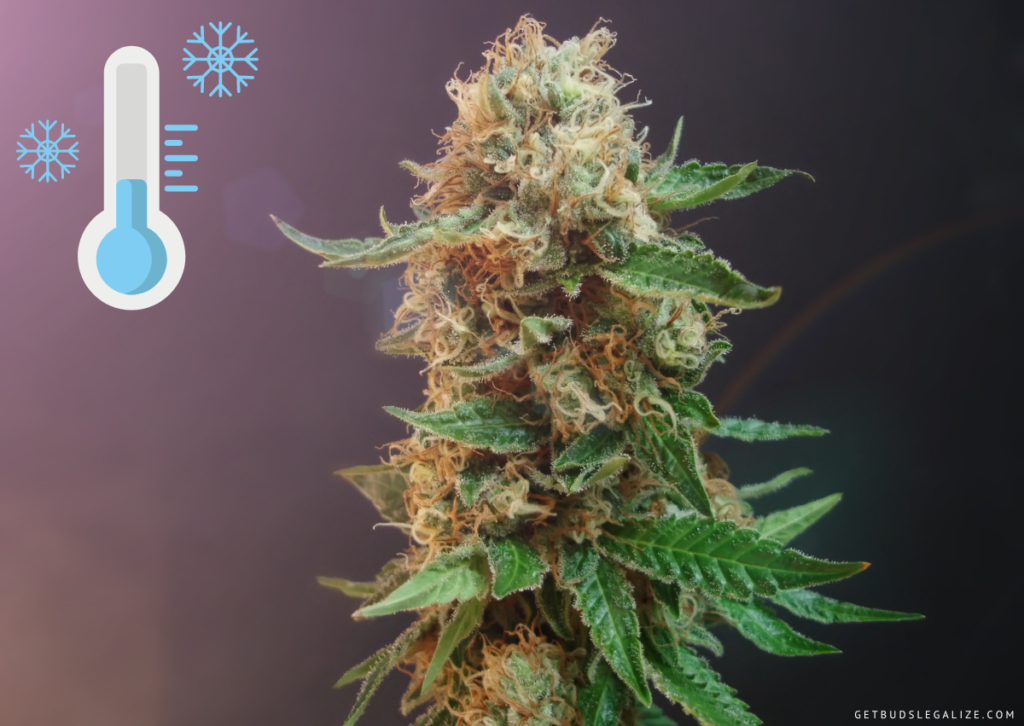
Another tip on how to boost THC levels in canabis plants is to try cold conditions in late bloom. This means exposing your plants to lower temperatures during the last two weeks of flowering before harvest. This can trigger a stress response in your plants that can boost their THC production.
The reason behind this is that cold temperatures can mimic the natural environment of cannabis in autumn when the days get shorter and colder. This signals to the plants that they need to finish their flowering cycle and produce more resin to protect themselves from frost and predators. Resin is the sticky substance that covers the buds and contains most of the cannabinoids and terpenes.
By lowering the temperature in your grow space or tent by a few degrees during late bloom, you can stimulate your plants to produce more resin and thus more THC. However, be careful not to lower the temperature too much or too suddenly, as this can shock your plants and damage them. A good range is between 15°C and 20°C (59°F and 68°F) during the night cycle.
Final Thoughts on Increasing Homegrown Cannabis Potency
As you can see, there are many ways to increase the THC level of your medical marijuana plants. By choosing high-THC seeds, maintaining your plant health, and trying cold conditions in late bloom, you can boost the potency of your buds and enjoy a more intense high.
However, remember that THC is not everything when it comes to cannabis quality and effects. There are many other factors that influence how cannabis makes you feel, such as:
- The ratio of THC to CBD (cannabidiol), another cannabinoid that has opposite effects to THC.
- The profile of terpenes, which are aromatic compounds that modulate the effects of cannabinoids.
- The method of consumption (smoking, vaping, edibles, etc.).
- The dose and tolerance of each individual user.
Therefore, don’t focus only on THC levels when choosing or growing your cannabis. Experiment with different strains, methods, and doses to find what works best for you and your preferences.
Faqs about How to Boost THC Levels in Canabis Plants
CO2 (carbon dioxide) is a gas that plants use for photosynthesis, the process of converting light into energy and sugars. By increasing the CO2 levels in your grow room or tent, you can increase the photosynthesis rate of your plants and thus their growth and yield. However, there is no conclusive evidence that CO2 can increase THC levels in cannabis buds. Some studies have shown that CO2 can increase THC levels in some strains, while others have shown no effect or even a decrease. Therefore, CO2 supplementation may not be worth the cost and effort for most home growers.
If you are looking for the highest THC strains 2023, you might be interested in some of the latest developments in the cannabis industry. According to our reviews, the top strains of 2023 are:
No, this is not necessarily true. Indoor cannabis can have some advantages over outdoor cannabis, such as more control over the environment, light cycle, and security. However, outdoor cannabis can also have some benefits, such as more exposure to natural sunlight, fresh air, and organic soil. Both indoor and outdoor cannabis can produce high-quality buds with high THC levels, depending on the strain, growing conditions, and care. The main difference is that indoor cannabis tends to be more consistent and uniform, while outdoor cannabis tends to be more diverse and variable.
No, this is also not true. Autoflowers are cannabis plants that flower automatically based on their age, rather than the light cycle. They are usually faster and easier to grow than photoperiod plants, which require a change in the light cycle to induce flowering. However, autoflowers used to have lower THC levels than photoperiod plants, due to their ruderalis genetics. Ruderalis is a type of cannabis that grows in harsh climates and has low THC levels but high CBD levels.
However, thanks to modern breeding techniques, autoflowers have improved significantly in terms of potency, yield, and quality. Nowadays, you can find many autoflower strains that have comparable or even higher THC levels than photoperiod strains, such as Auto Gorilla Glue, Auto Amnesia Haze, Auto Bruce Banner, and many more.
Pinching and training are techniques that involve manipulating the shape and structure of your cannabis plants to improve their light exposure, airflow, and bud production. Some of the common methods are topping, FIMing, LST (low-stress training), HST (high-stress training), SCROG (screen of green), SOG (sea of green), and super cropping.
These techniques can boost the potency of your cannabis plants indirectly by increasing their yield and quality. By creating more bud sites and ensuring even light distribution and ventilation, you can maximize the potential of your plants and produce bigger and denser buds with more resin. However, these techniques do not directly affect the THC production of your plants. They only help them express their genetic potential more fully.
Many cannabis consumers believe that more trichomes on the buds mean more THC and higher potency. However, this is not necessarily true. Trichomes are the resinous glands that produce cannabinoids, terpenes, and other compounds in the cannabis plant. The amount and type of trichomes depend on various factors, such as genetics, environment, and harvest time. While trichomes do indicate the presence of THC, they do not directly measure its concentration or quality. Therefore, more trichomes do not always mean more THC or better effects.
THC begins to form in the trichomes during the flowering stage of the cannabis plant when it is exposed to light and heat. The THC levels peak at around 6 to 8 weeks of flowering, depending on the strain and growing conditions. After that, the THC may degrade into other compounds, such as CBN, which have different effects.
There are several factors that can influence the trichome production of a cannabis plant, such as genetics, environment, nutrients, and harvesting time. Some general tips to increase trichome production are:
- Choose a strain that is known for its high resin content and potency.
- Provide optimal lighting, temperature, humidity, and ventilation for your plants.
- Feed your plants with organic nutrients that are rich in phosphorus and potassium, especially during the flowering stage.
- Avoid overwatering, overfeeding, or stressing your plants, as this can reduce their quality and yield.
- Harvest your plants at the right time, when the trichomes are mostly cloudy or amber in color.
Increasing the levels of THC may have several benefits for medical and recreational users, such as:
- Providing stronger and longer-lasting effects, such as euphoria, relaxation, pain relief, appetite stimulation, creativity, and mood enhancement.
- Reducing the amount of cannabis needed to achieve the desired effects, which may save money and reduce the risk of tolerance or dependence.
- Increasing the diversity and complexity of the terpene profile (the aromatic compounds that give cannabis its flavor and aroma), which may enhance the entourage effect (the synergistic interaction between cannabinoids and terpenes that may boost the therapeutic potential of cannabis).
There is no scientific evidence that sugar increase cannabis trichome production. Trichomes are specialized structures that produce and store cannabinoids and terpenes, the active compounds of cannabis. Sugar is not a nutrient for plants, but a product of photosynthesis. Adding sugar to the soil or water may harm the plants by attracting pests, fungi, and bacteria.
There is no definitive answer to this question, as different strains have different genetic potentials and environmental factors can also affect THC production. However, some experts believe that there is a theoretical limit to how much THC cannabis plants can produce, which is around 35% to 40%. This is because THC is synthesized from a precursor molecule called CBGA (cannabigerolic acid), which is also the precursor for other cannabinoids such as CBD and CBC. Therefore, there is a trade-off between the production of different cannabinoids, and if one increases, the others decrease.
ILGM Fertilizer

- From seedling to harvest, give your plants everything they need.
- Enough for feeding at least 5 plants.
- Discounted Package Deal
- Works well in soil, hydroponics, and other growing mediums.
- The best way to treat your plants
ILGM Plant Protector

- Protect your cannabis from diseases and harmful pests.
- Contains three 20 ml bottles.
- Enough supplies to protect 20 plants.
- It can be used in soil, hydroponic, and all other growing mediums.












